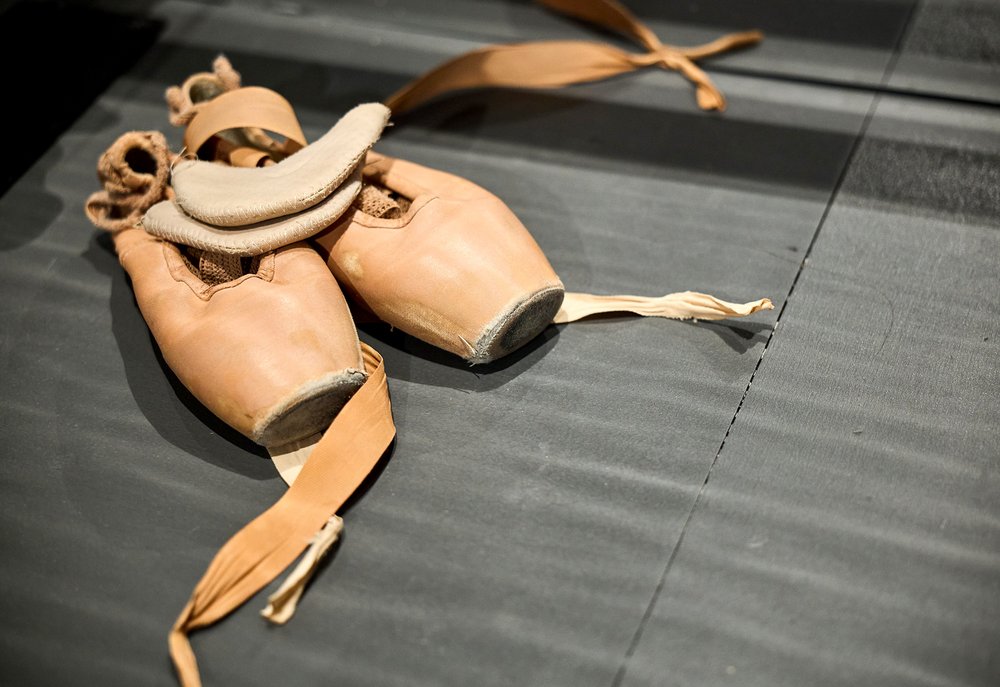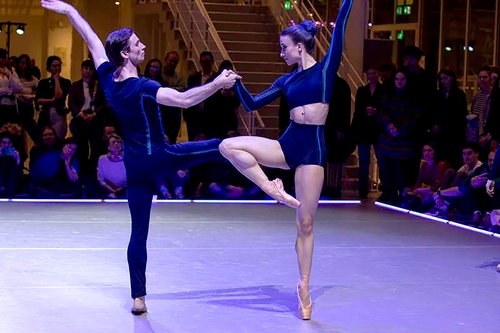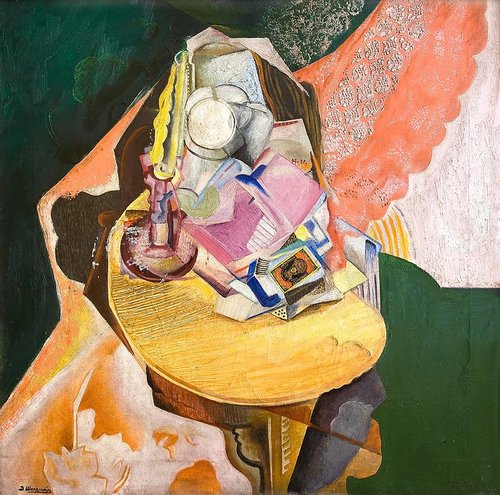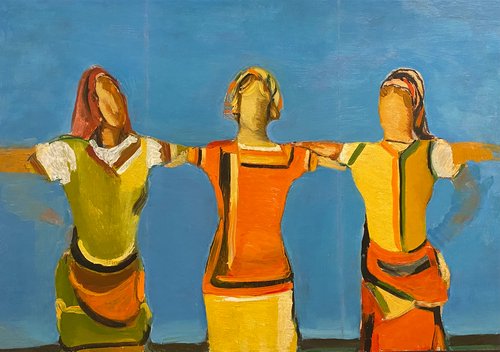Dancing through the 20th Century

20th Century Dance. Matisse, Malevich, Diaghilev, Kandinsky and Others. Exhibition view. Moscow, 2025. Courtesy of Jewish Museum and Tolerance Centre
An innovative and kaleidoscopic exhibition ‘20th Century Dance. Matisse, Malevich, Diaghilev, Kandinsky and Others’ at the Jewish Museum and Tolerance Centre in Moscow masterfully brings dance history to life. Weaving together visual art, music and performance footage curator Maria Gadass creates a multi-sensory journey from Isadora Duncan to Mikhail Baryshnikov, revealing dance's profound relationship with 20th century artistic movements.
The history of dance is difficult to integrate into a museum space: costumes, sketches and vintage photographs of performances struggle to stimulate the imagination once the movement is gone. Like pinned butterflies, they seem dead and dry, more likely to evoke boredom than excitement. Film and video recordings fail to convey the magic of live performance, and the quality of the earliest footage is often so poor that curators have to rely mostly on the viewer's imagination. But how to make it work? The Jewish Museum’s curator Maria Gadass and her team seem to know something of the magic. Their groundbreaking exhibition ‘20th Century Dance. Matisse, Malevich, Diaghilev, Kandinsky and Others' combines artworks in a variety of different media to create a compelling multi-sensory narrative that engages exhibtion goers from the moment they step into the first dimly lit space. There, rare footage of Isadora Duncan (1877–1927) dancing in a garden puts viewers into a trance that lingers throughout the long, meditative walk through the spaces all the way to Mats Ek’s (b. 1945) ‘The Place’, starring Anna Laguna (b. 1954) and Mikhail Baryshnikov (b. 1948).
The exhibition has some technical innovations for visitors bringing new experiences for the presentation of the performing arts in a traditional museum space. You move from room to room wearing headphones that automatically switch to an appropriate soundtrack when you approach a screen showing a recorded performance. While such complex contraptions are usually prone to glitches and hiccups, in this show everything works with almost magical smoothness. And even the interactive elements, the bane of almost every museum show these days, are playful, subtle and unobtrusive. Visitors are encouraged to try out classical ballet steps in front of mirrored walls – it turns out the mirrors are one-sided, so those in the adjacent space are able to observe the clumsy efforts of their unsuspecting peers, an amusing addition to the some two hundred works of art on show including paintings, sketches, costumes and videos.
By placing the performing arts in the context of painting and other visual arts, this exhibition allows the viewer to see both disciplines in a new light. Internal movement in the Suprematist compositions of Kazimir Malevich (1879–1935) suddenly becomes clear when you learn here about Nina Kogan’s (1889–1942) Suprematist Ballet in Vitebsk – a one-off performance of which only a director’s sketch and a narrative description have survived. The curators commissioned a video reconstruction, which takes the form of an abstract animated cartoon. The harmony of Kandinsky’s unrealised Yellow Sound Ballet can be felt in his paintings, which hang here alongside a screen showing a contemporary reconstruction of the performance itself.
Balance is a crucial element of dance, and the exhibition is perfectly choreographed, balancing familiar names with lesser-known figures and half-forgotten stories. Speaking at the opening of the exhibition, Maria Gadass confessed that neither she nor the rest of the team had ever received any formal dance training, so they approached the history of the medium with no professional bias, but with the genuine excitement of a novice. From the well-known saga of Diaghilev’s (1872–1929) ‘Ballets Russes’, they chose two lesser-known productions rather than staple ballets by Stravinsky and Massine: ‘The Joker’, in which Mikhail Larionov (1881–1964) acted not only as costume designer but also as choreographer, and the experimental and ill-received ‘Parade’, with costumes by Larionov and music by Erik Satie (1866–1925).
The story of Russian culture after the Bolshevik revolution of 1917, how it was deluded by promises of artistic freedom and dreams of creating new art for the new world and how these illusions were crushed by the totalitarian regime in less than 20 years, is told without strained dramatic effects, by means of a few carefully chosen images and videos. Rare footage shows Soviet followers of Duncan dancing in faux Ancient Greek clothes before an audience of Soviet Young Pioneers. On another wall, followers of visionary theatre director Vsevolod Meyerhold (1874–1940) practice his biomechanics – a system of physical training for actors that he wanted to transplant onto other professions. Yet this intriguingly diverse landscape does not last.
The exhibition shows how the opulent Hollywood-style choreography of Kasyan Goleizovsky (1892–1970) and his cabaret dance troupe ‘Girls’, with its playful sensuality, gives way to aceptic athletic parades on Red Square. (Surprisingly, these shows of cyclopic proportions, in which the human body is stripped of its passions and individual will and reduced to a detail of an enormous machine, were staged by the same former avant-garde directors, such as Goleizovsky and Meyherhold). Classical ballet became the pride of the USSR for generations to come, preserving ancient traditions and gradually becoming a bronze monument to itself. Meanwhile, breakthroughs and revelations in the realm of dance were happening elsewhere – from Japan, where Butoh dance was invented, to Sweden, the birthplace of Mats Ek, who blurred the line between choreography and video art, making not the dance but its edited recording the final, definitive fulfilment of his artistic vision. This may sound like a timely cautionary tale for governments seeking to control culture – but warnings like this almost always go unheeded.
20th Century Dance. Matisse, Malevich, Diaghilev, Kandinsky and Others
Jewish Museum and Tolerance Centre
Moscow, Russia
11 April – 3 August, 2025




















